I love taking the kids to the beach because it’s an adventure for both of them and me as well. I never know what we’ll discover and they’re always finding something interesting in the sand. Jocie and I try to encourage a sense of respect for the living things that we find and at their age (2 and almost 4) they’re already pretty good at leaving things where we find them.
Last week we headed out onto the sand flats at Miracle Beach Provincial Park. The endless sand here is perfect for both exploration and burning off a little steam – they both love to run on the sand. It was here that we found the blue clawed hermit crab and an immense field of Eccentric Sand Dollars (Dendraster excentricus). Miracle Beach is a great place to find sand dollars – just remember it is a provincial park and you’re not allowed to collect anything that you find. Leave it there for someone else to enjoy.
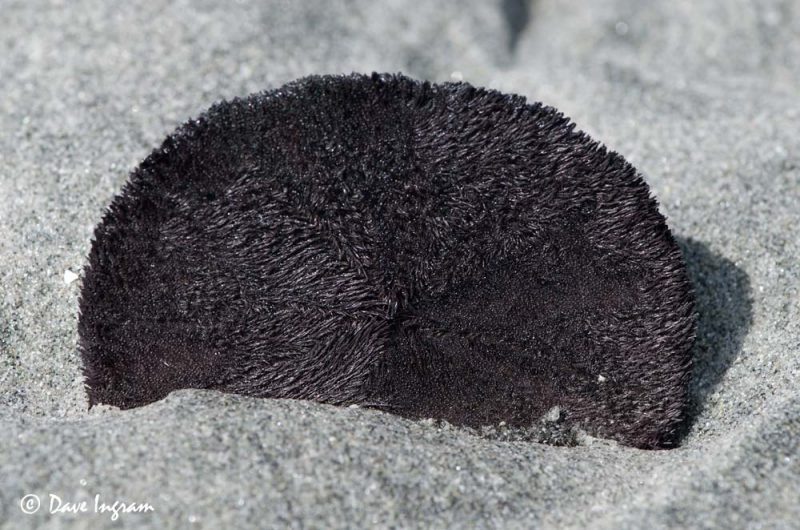
Eccentric Sand Dollars are echinoderms which means that they’re related to sea urchins, sea cucumbers and sea stars – all of these organisms are radially symmetrical. Think of a sand dollar as a flattened sea urchin. They’re called “eccentric” because they’re a little off center and not quite a perfect circle in shape.
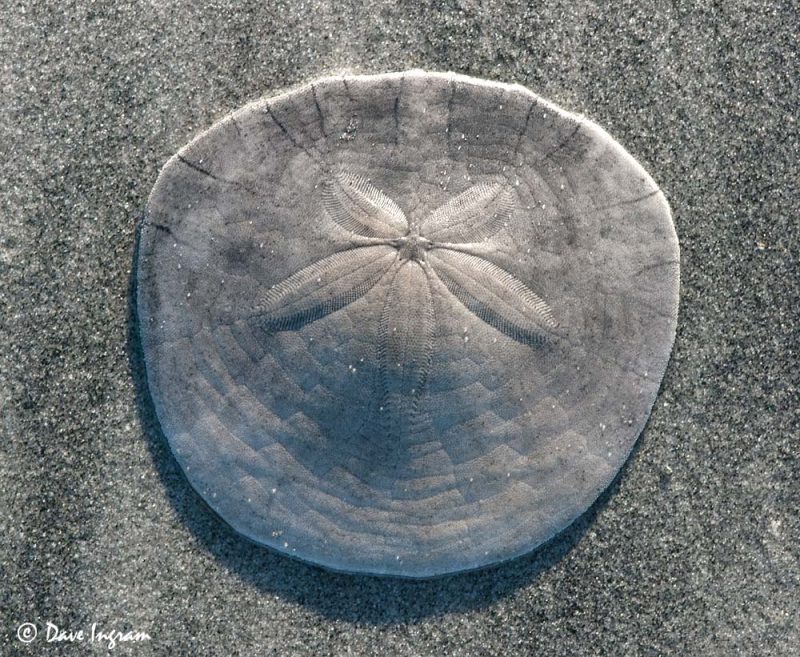
Like a sea urchin, sand dollars are covered with fine tube feet and spines. Live ones are a rich purple/black and have a velvety texture. If you pick one up and look closely at it (as we did) you can see the tube feet moving on the flat undersurface of the disk. They can be up to 8 cm in diameter.
Typically the Eccentric Sand Dollar can be found at low tide on the sandy beaches of Vancouver Island – Miracle Beach Provincial Park, Rathtrevor Beach Provincial Park and the sandy beaches in Parksville and Qualicum Beach are particularly good places to find beds of sand dollars. Both the City of Parksville and Beach Club Resort use a sand dollar as part of their logo – ironically it looks suspiciously like a Five Slotted Sand Dollar (Mellita quinquiesperforata) which is not found in British Columbia.
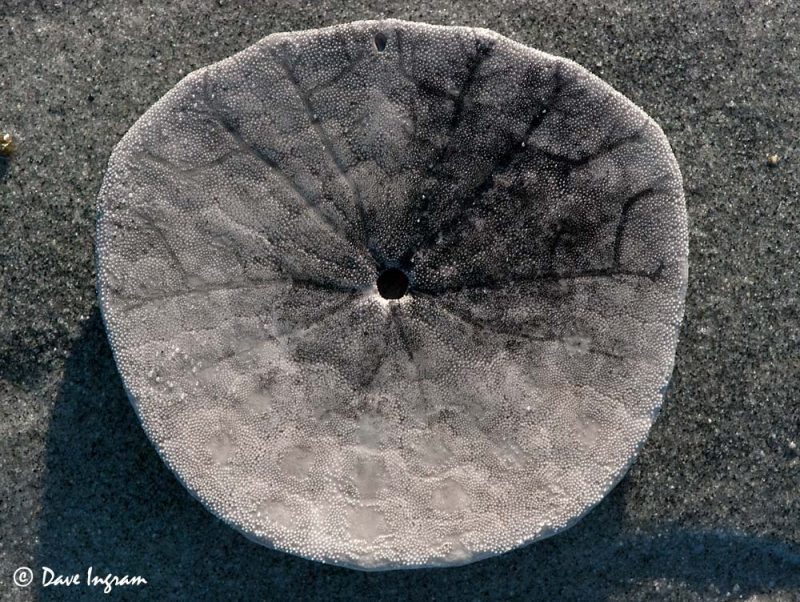
Sand dollars feed on detritus and diatoms on the sand, passing particles of food to their mouths at the center of the disk. Often they’ll position themselves partially buried in the sand at an angle to the current. Juvenile sand dollars also take in heavy grains of sand rich in iron in addition to food. The sand acts as a weight belt to keep them somewhat stationary in the dynamic environment of the beach.
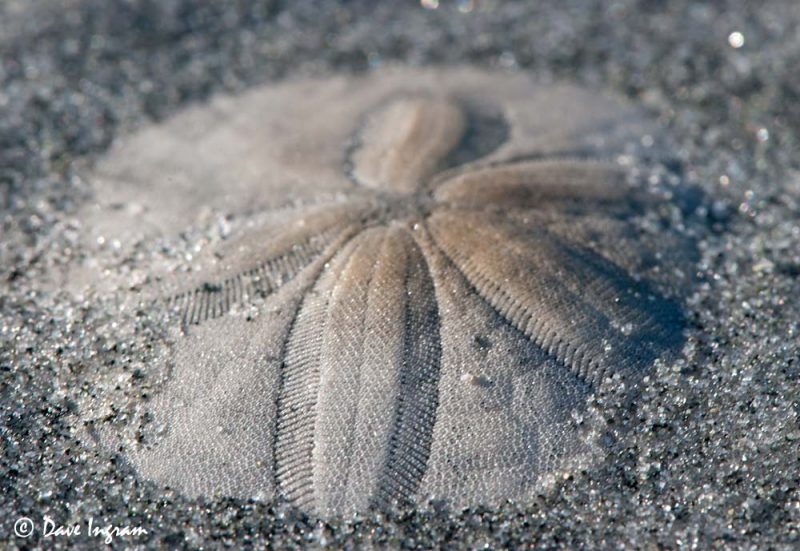
Dead sand dollar tests are common on sandy beaches as well. Look for white sand dollars with a distinctive five leaf pattern on the back. The markings are called the petalidium and show where the larger tube feet responsible for respiration are located on a living sand dollar. While they’re also visible on live sand dollars they’re definitely easier to see on the white sand dollar tests.
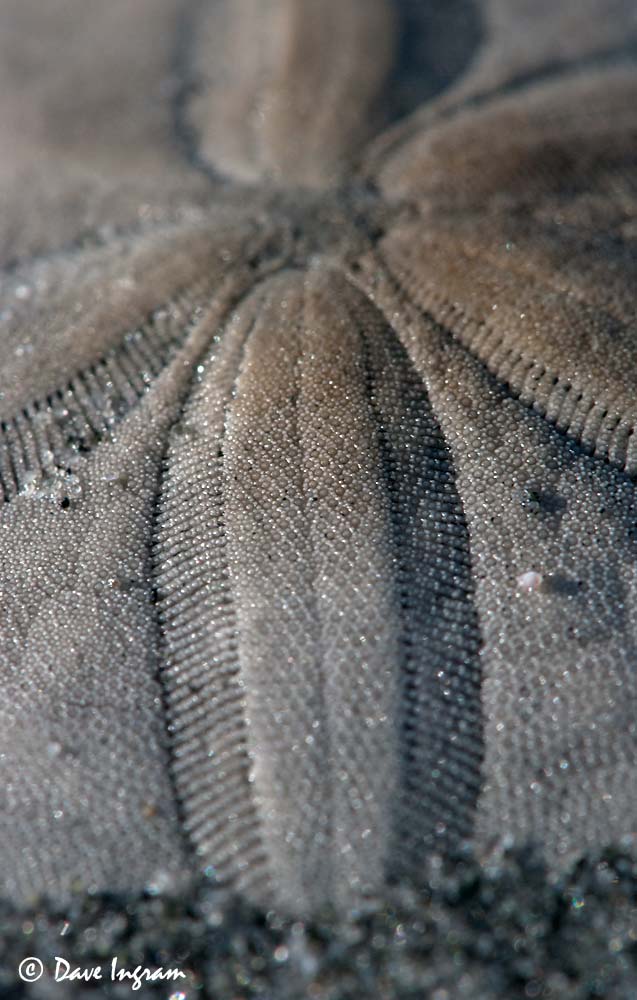
We spend about 30 minutes look at sand dollars until the kids let me know that they’d had enough and were ready to continue the safari and search for other interesting things on the beach. Fortunately they’re both pretty light – no sand dollars were harmed in this video!
If you’re interested in reading more about Eccentric Sand Dollars consider:
- Eyes on Puget Sound: The Eccentric Sand Dollar – Dendraster excentricus
- WSU Beach Watchers: Sand Dollars
- Puget Sound Sealife: Eccentric Sand Dollar
Learn more about invertebrates of all shapes and sizes in this month’s Circus of the Spineless, hosted in May at Squid a Day.
